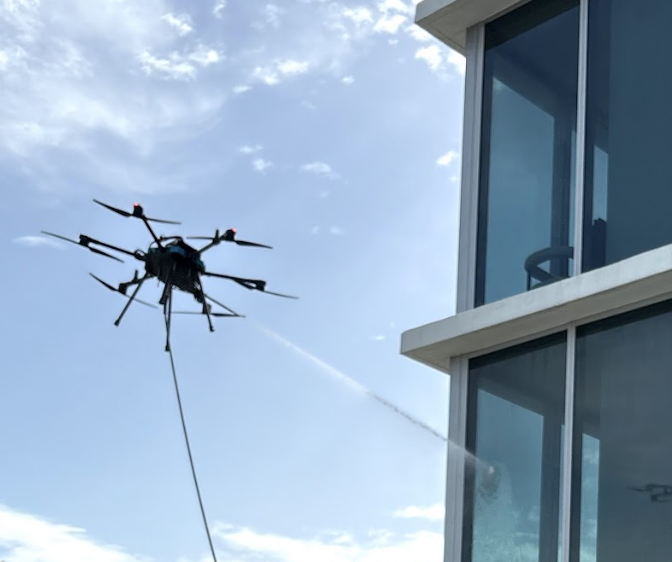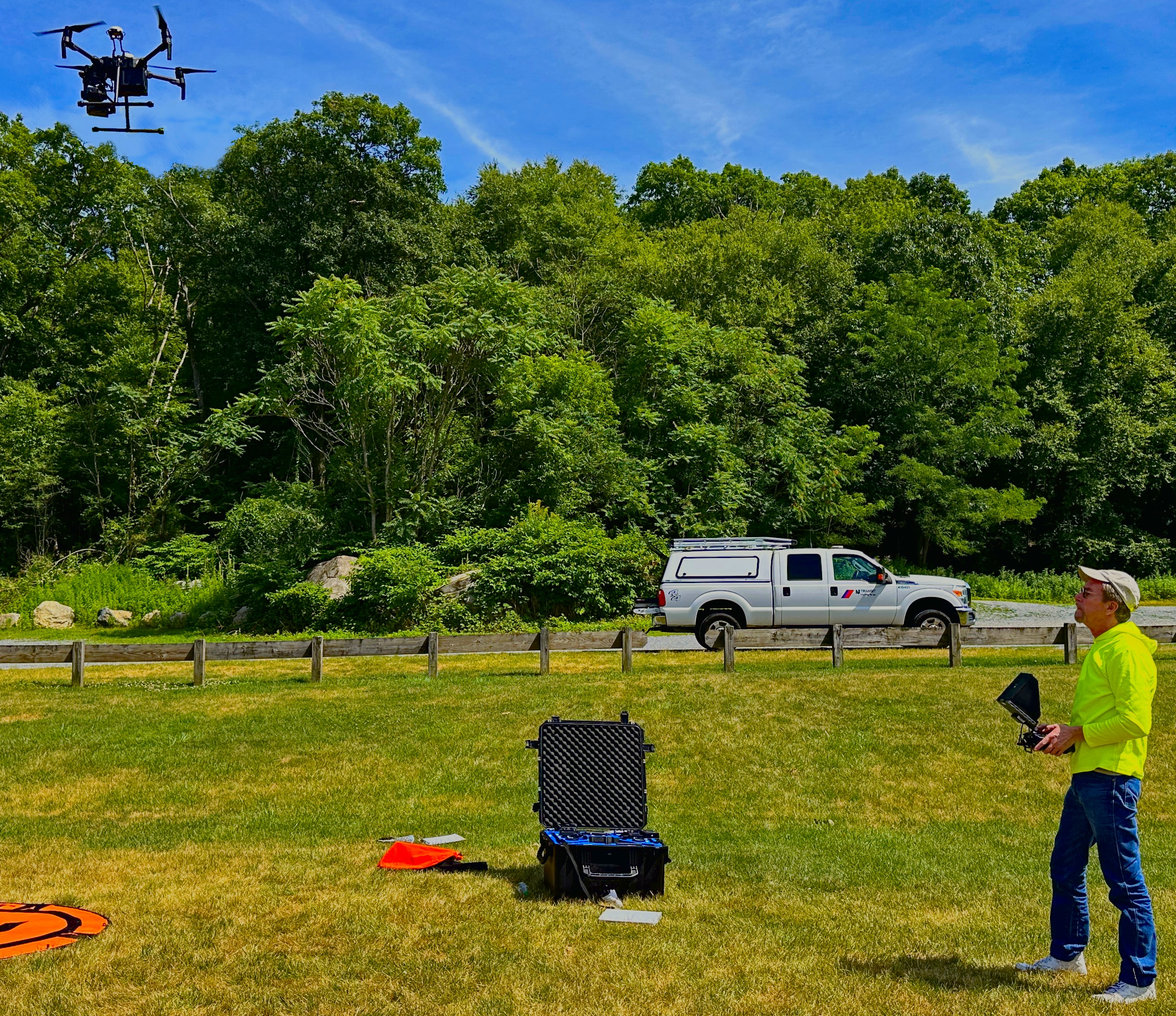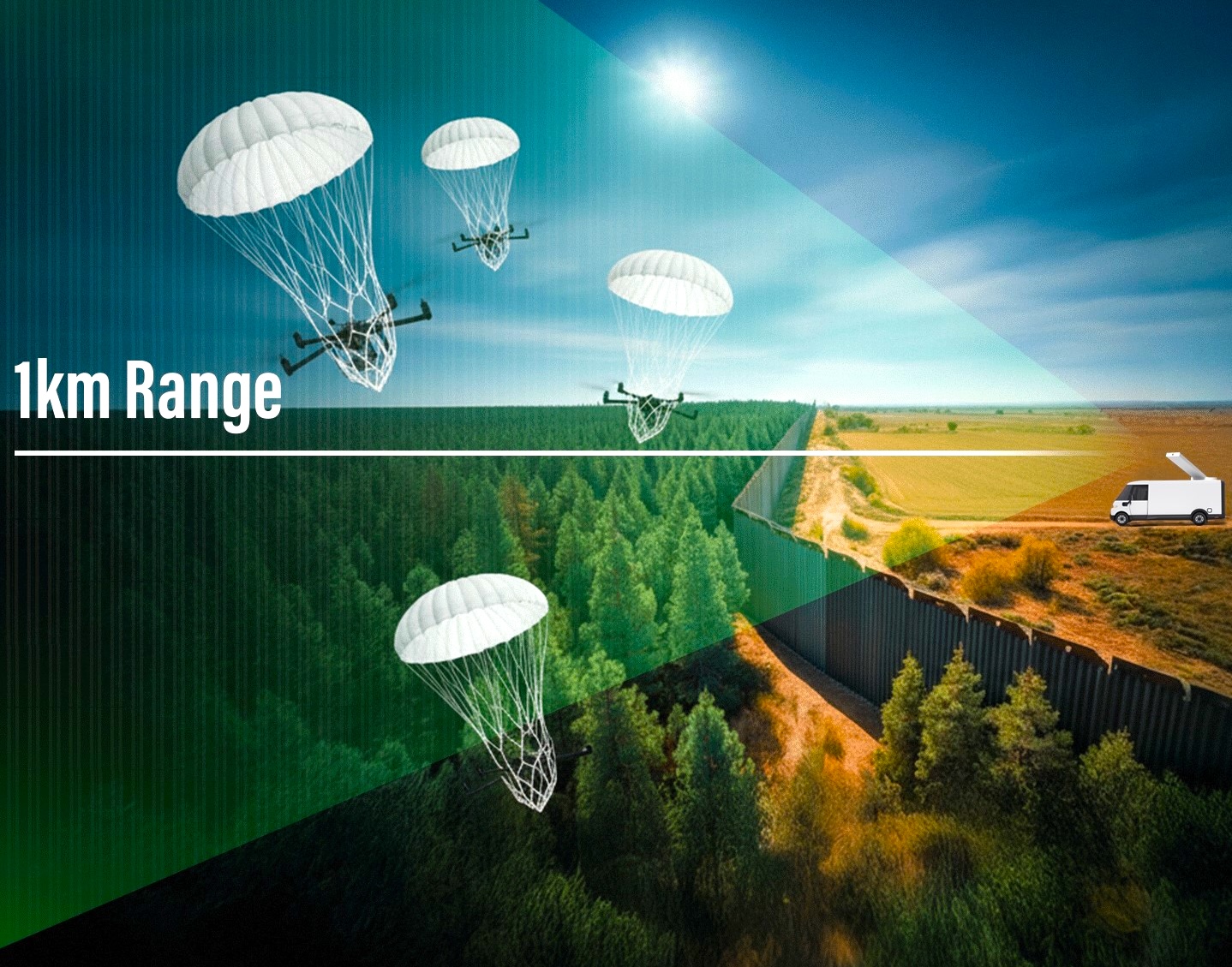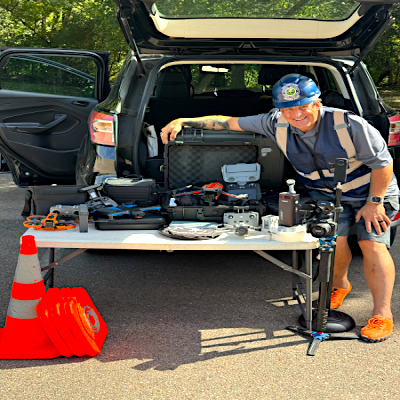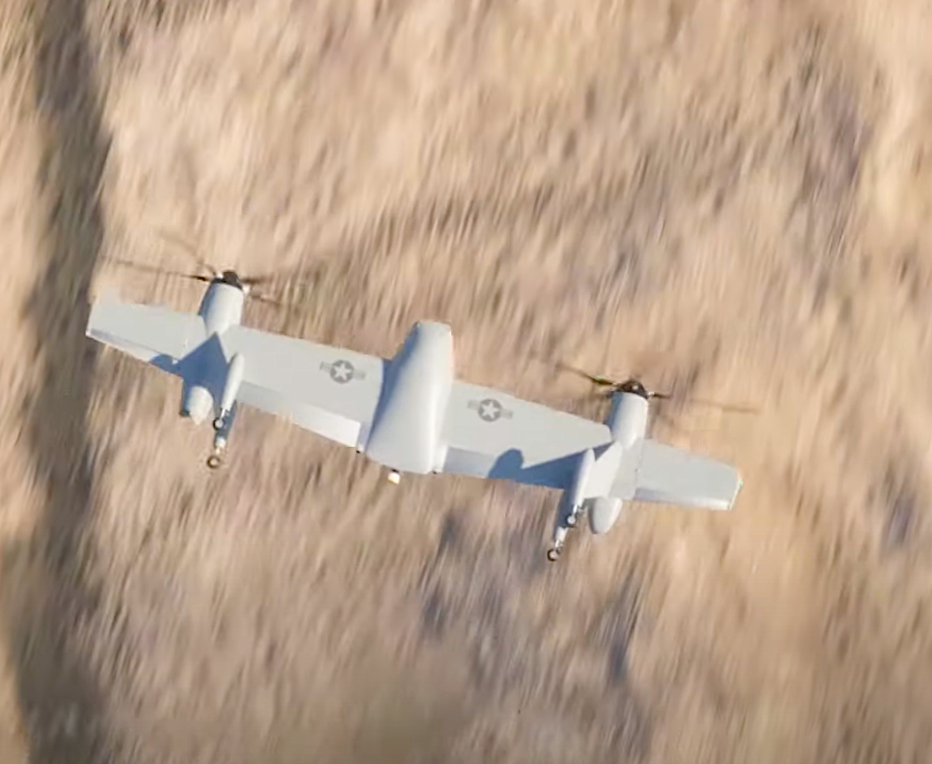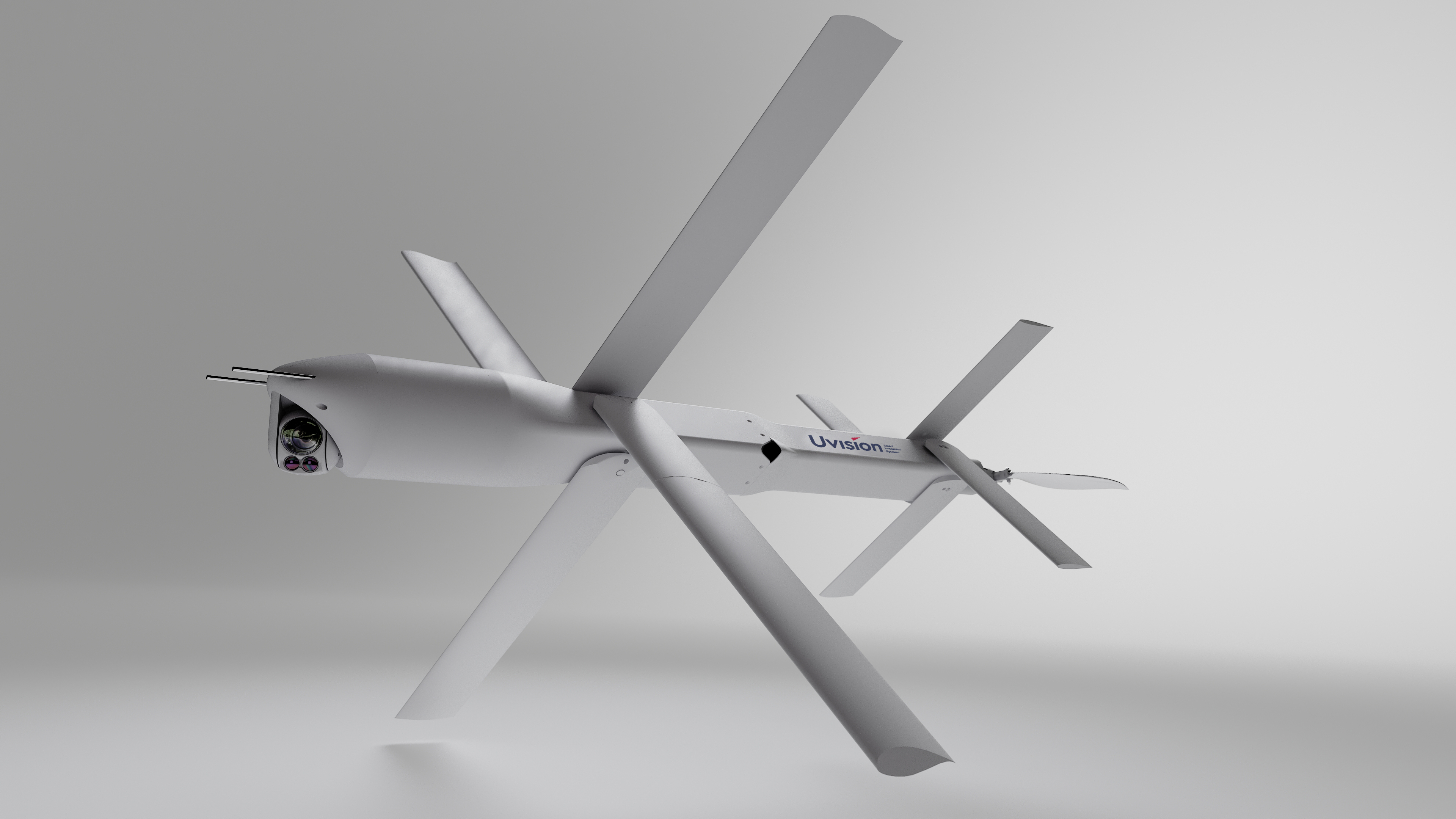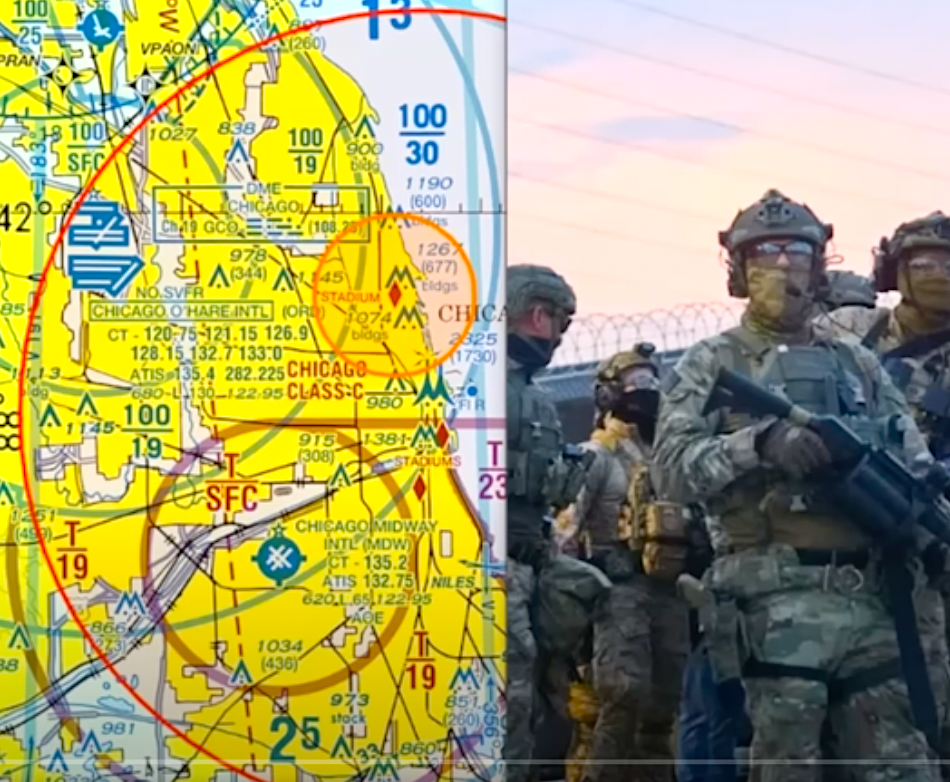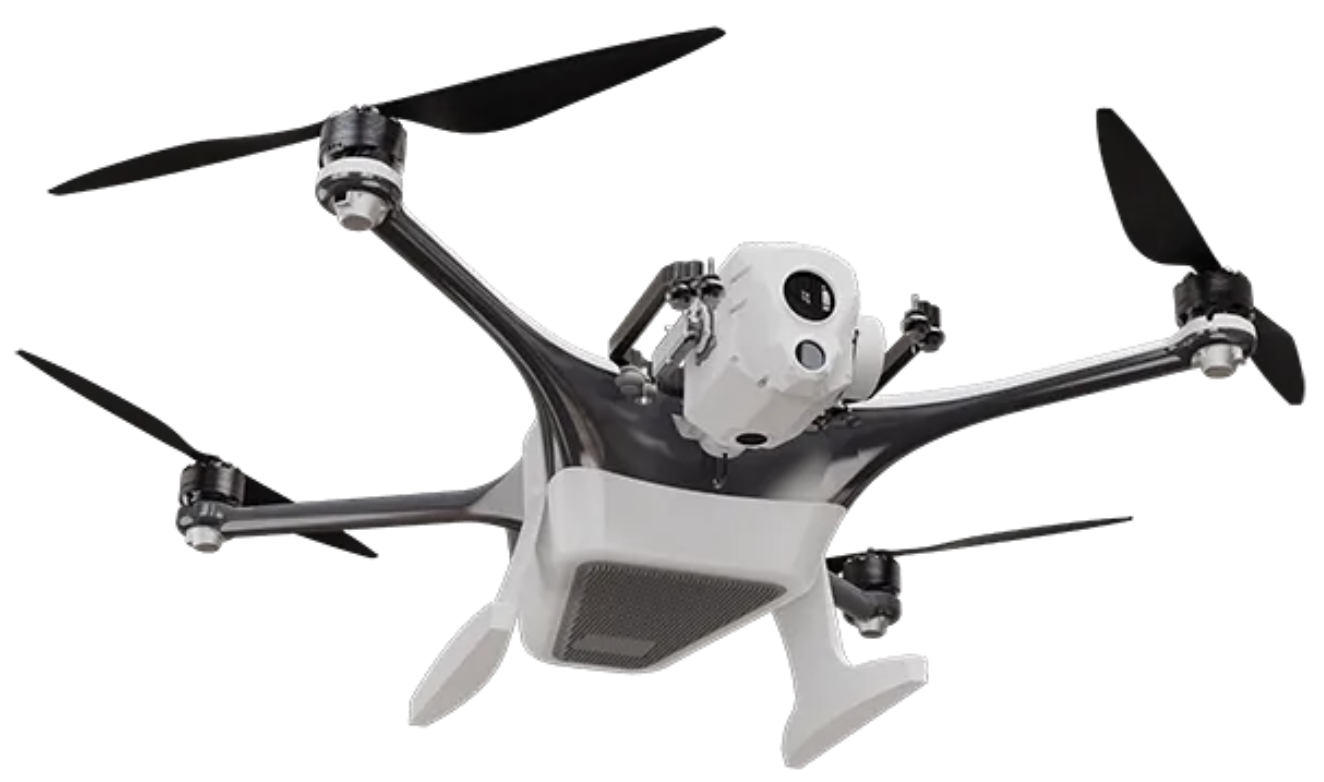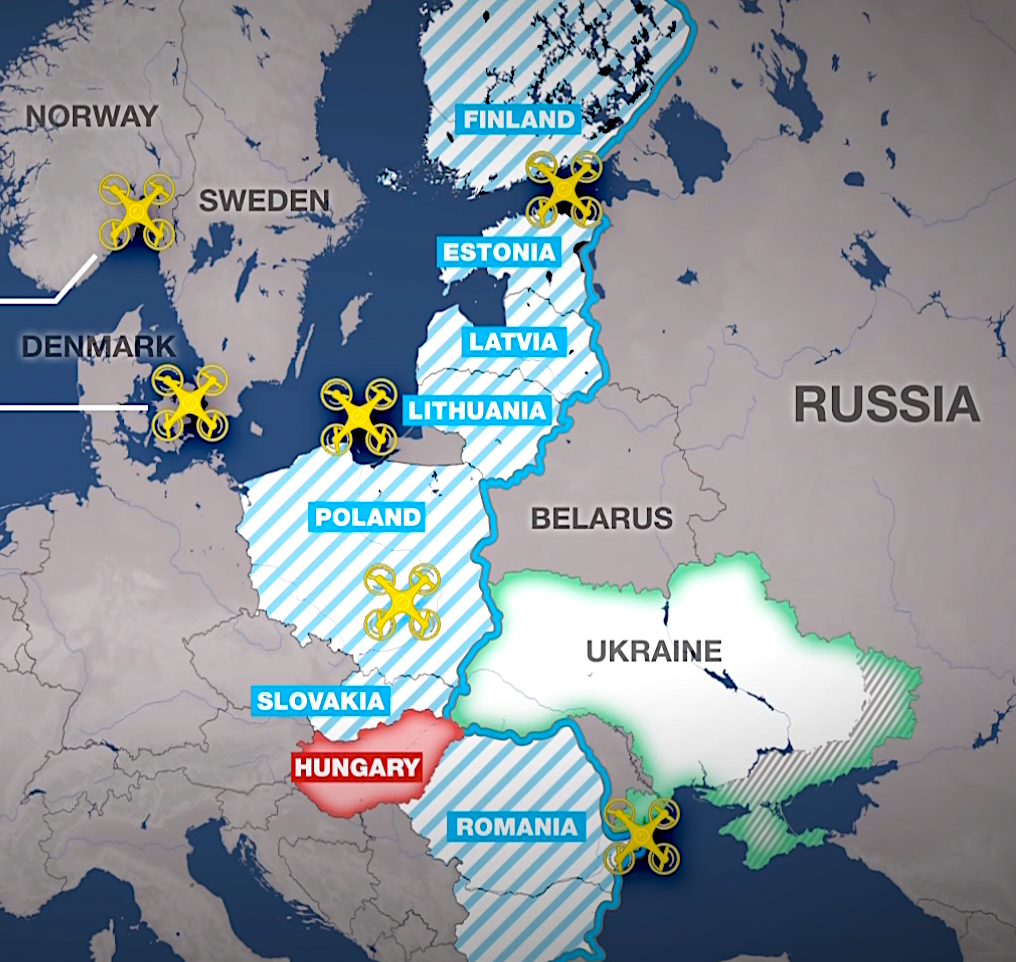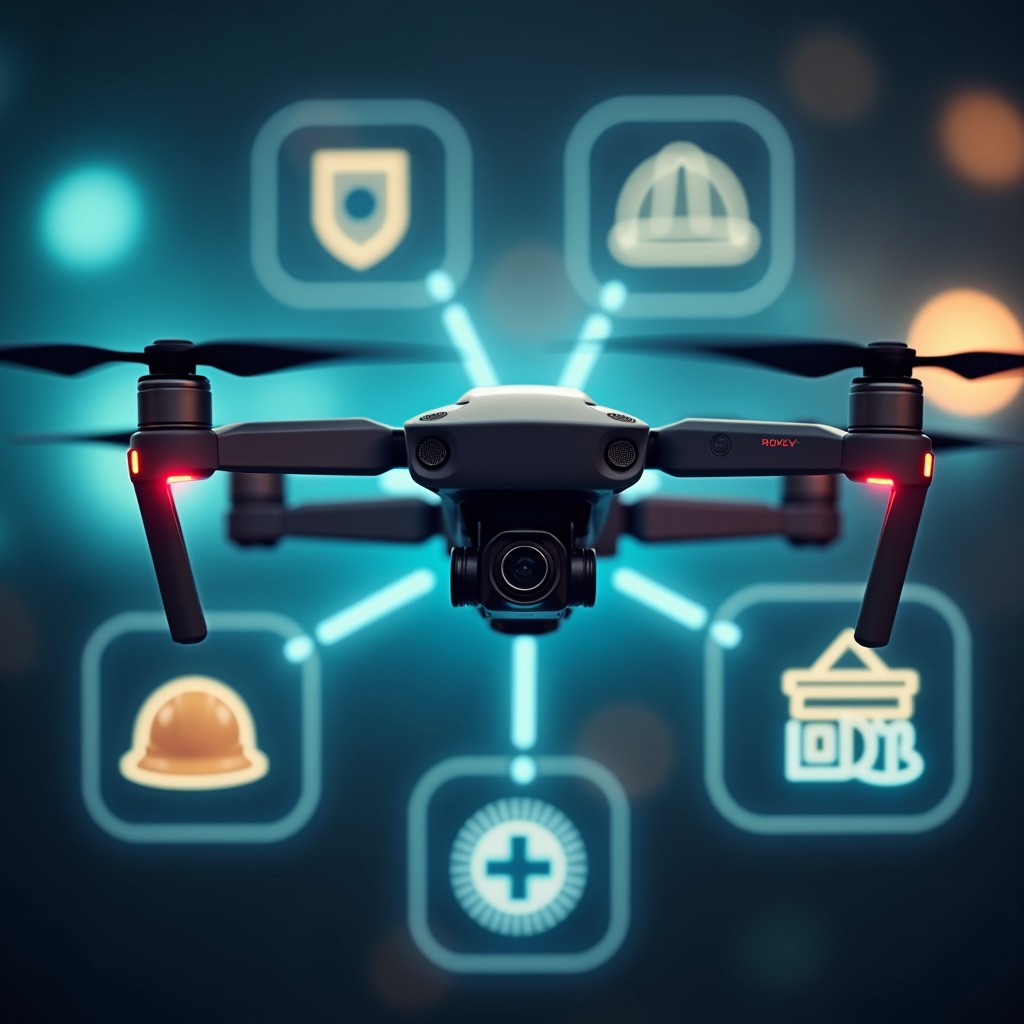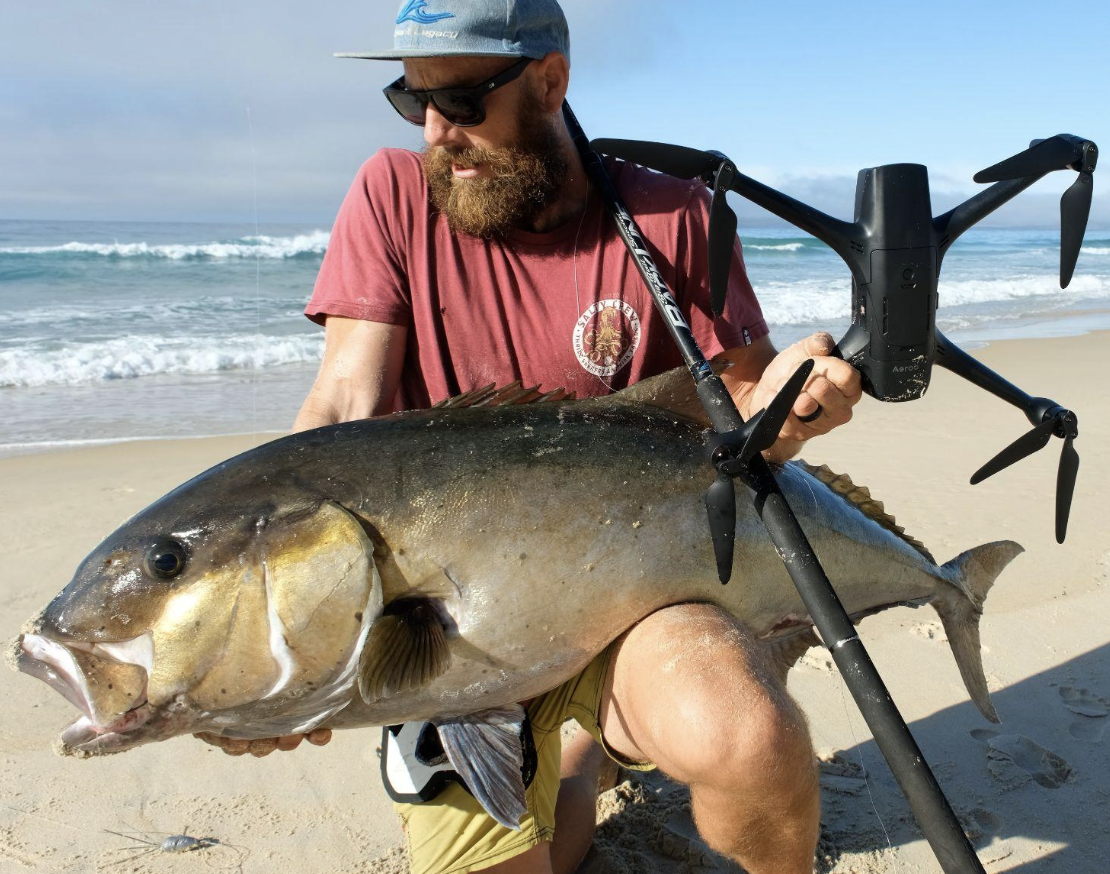Featured NewsProduct NewsTurbine Inspection Drone Market to Surpass $1.23 Billion by 2033
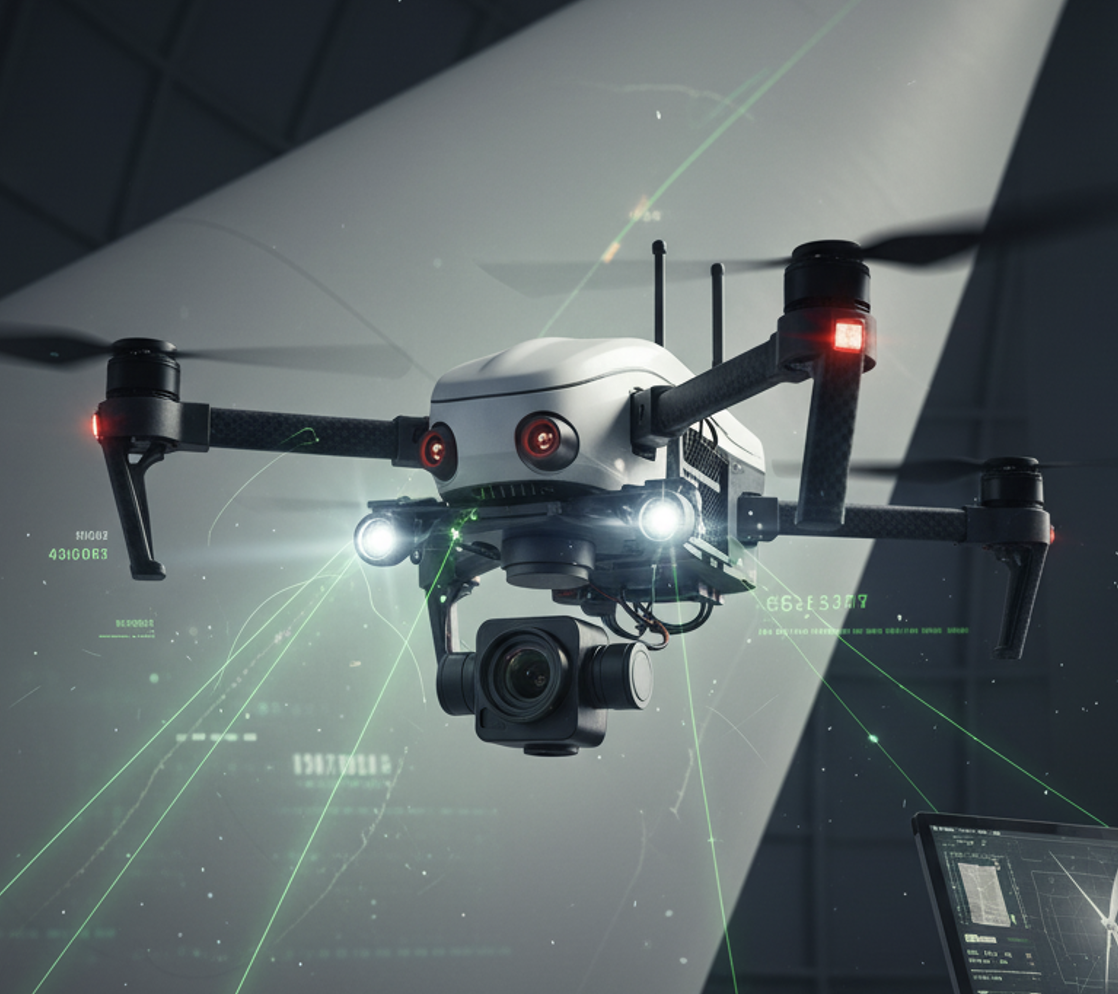
10 October 2025
The global shift toward renewable energy and the digitalization of industrial maintenance have converged in an unexpected arena—turbine inspection drones. What began as an experimental application for unmanned aerial vehicles (UAVs) has evolved into a high-value industry at the intersection of artificial intelligence, robotics, and infrastructure management.
According to Research Intelo, the turbine inspection drone market was valued at USD 412 million in 2024 and is projected to reach USD 1.23 billion by 2033, growing at a compound annual growth rate (CAGR) of 12.8 percent. The figures reflect not only the expansion of renewable energy assets but also the steady replacement of traditional, labor-intensive inspection methods with autonomous, AI-enabled alternatives.
Efficiency, Safety, and Predictive Maintenance
The adoption of inspection drones is not simply a technological trend; it represents a structural rethinking of how maintenance is approached in high-risk and capital-intensive environments.
Manual inspections—especially of wind, gas, and hydro turbines—are both expensive and hazardous. Technicians often spend hours climbing towers or rappelling down turbine blades before beginning any actual diagnostic work. Every movement at such heights introduces safety risks and time loss.
Drones, by contrast, perform the same inspection in minutes. They capture high-resolution imagery, structural data, and temperature profiles without exposing personnel to danger. The shift reduces operational downtime and allows inspections to occur more frequently, ensuring that minor issues are addressed before they escalate into costly failures.
As per Research Intelo analysis, the economic case for drones is strengthened by their ability to enable predictive rather than reactive maintenance. AI-based analytics platforms process the captured data to detect wear, deformation, or heat anomalies before visible damage appears. This transition from inspection to prevention fundamentally alters asset management economics.
Technology at the Core: Sensors and Intelligence
The real innovation in turbine inspection lies in sensor integration and artificial intelligence. Modern UAVs no longer rely solely on optical cameras. They combine multiple sensing modalities—lidar, thermal imaging, and even acoustic and ultrasonic sensors—to create multi-dimensional data maps of turbine structures.
Lidar (Light Detection and Ranging) allows precise three-dimensional modeling of blades and towers, revealing microscopic deformations that standard photography cannot detect. Thermal sensors identify subtle heat signatures that may indicate friction, material fatigue, or internal component failure. Together, these systems provide an unprecedented depth of diagnostic accuracy.
Machine learning algorithms further enhance this process. Through pattern recognition, drones can automatically classify defects and assign severity levels. The analysis can determine whether a small anomaly requires immediate repair or routine monitoring. The result is a data-driven workflow that minimizes subjective judgment and accelerates maintenance decisions.
The Evolution of Drone Design
The hardware architecture of turbine inspection drones continues to evolve in response to operational needs.
Rotary-wing drones—quadcopters, hexacopters, and similar designs—currently dominate the market. Their ability to hover precisely and maneuver around confined spaces makes them ideal for inspecting turbine blades, towers, and nacelles. Stability during close-up imaging ensures clear data collection even in strong winds.
Fixed-wing drones, which resemble small aircraft, serve a different function. Their endurance and range make them suitable for inspecting extensive wind farms or long industrial corridors. They can cover large distances efficiently, though they lack the stationary stability of rotary-wing designs.
A growing segment of hybrid drones now bridges this divide. These systems transition seamlessly between rotary and fixed-wing flight modes, offering the long-range efficiency of airplanes and the close-range precision of multicopters. Their flexibility is especially valuable for inspecting offshore wind farms and remote hydroelectric installations.
The Move Toward Autonomy
The next phase of market evolution is marked by automation. Drone systems are now classified by their level of autonomy: manual, semi-autonomous, and fully autonomous.
Manual operation—once the norm—is rapidly diminishing, largely confined to smaller operators and one-off missions. Semi-autonomous systems, which combine automated flight paths with human oversight, are now common across large-scale deployments.
The greatest technological and economic momentum lies in fully autonomous inspection systems. These drones utilize AI for navigation, obstacle avoidance, and defect recognition. Pre-programmed routes allow them to inspect entire wind farms with minimal human input. In some cases, they even transmit findings directly to cloud-based analytics platforms, which generate inspection reports without manual data handling.
This automation does not merely reduce labor costs; it also enhances data consistency. Autonomous drones repeat flight paths with exact precision, ensuring that successive inspections are perfectly comparable over time. Such consistency is invaluable for predictive analytics and trend analysis.
Key Market Segments and Applications
The wind turbine sector remains the largest market for inspection drones, accounting for the majority of total revenue in 2024. This dominance reflects the global acceleration in renewable energy deployment. Both onshore and offshore wind installations require frequent maintenance, and each turbine blade—often exceeding 80 meters in length—demands detailed structural assessment.
Gas turbine inspection, primarily within the oil and gas industry, represents another major vertical. Here, drones equipped with specialized sensors detect gas leaks, corrosion, and mechanical stress in high-risk environments. The use of drones in confined or hazardous areas significantly reduces the need for human intervention.
Emerging interest is growing in hydropower turbine inspection, where drones are adapted for partially submerged or underwater applications. These specialized systems use corrosion-resistant materials and imaging technology suited for both air and water environments.
In the aerospace sector, inspection drones are increasingly used to examine aircraft engines and turbine assemblies. The ability to conduct non-invasive inspections without dismantling components saves time and reduces costs in maintenance, repair, and overhaul operations.
End Users and Adoption Patterns
The primary users of turbine inspection drones are energy and utility companies, reflecting their extensive asset portfolios and regulatory obligations for safety and environmental compliance. Large-scale operators often maintain dedicated drone fleets or contract specialized service providers.
Oil and gas firms follow closely, leveraging drones for routine infrastructure monitoring and safety compliance. Aerospace maintenance organizations represent a smaller but rapidly growing user base, driven by cost efficiency and precision demands.
Beyond these sectors, government agencies and research institutions also employ turbine inspection drones for testing, environmental assessments, and infrastructure audits. The technology’s flexibility enables diverse applications, from wind farm surveys to dam integrity inspections.
Regional Overview
North America holds the largest share of the global turbine inspection drone market—approximately 38 percent in 2024, according to Research Intelo. This leadership stems from a mature renewable energy ecosystem, well-defined regulatory frameworks, and a robust network of drone technology providers. The United States, in particular, benefits from established federal guidelines that streamline commercial drone operations, providing clarity for large-scale deployment.
Asia Pacific, however, is the fastest-growing region, projected to expand at a CAGR of 15.6 percent through 2033. The acceleration is fueled by rapid development of wind and hydroelectric capacity in China, India, Japan, and Southeast Asia. Governments across the region have introduced ambitious renewable energy targets, leading to a surge in turbine construction and, consequently, in maintenance demand.
Europe continues to demonstrate steady adoption, supported by offshore wind expansion in the United Kingdom, Germany, and the Netherlands. Meanwhile, Latin America and parts of the Middle East are emerging markets, where modernization of energy infrastructure and exploration of renewable sources are driving incremental growth.
Market Challenges and Constraints
Despite its strong outlook, the turbine inspection drone industry faces structural challenges.
Regulatory inconsistency remains a major concern. Airspace management laws and privacy regulations vary across jurisdictions, complicating international operations. Drones inspecting critical infrastructure must comply with evolving national security standards, often leading to lengthy approval processes.
Supply chain instability also poses a persistent risk. The global shortage of semiconductors and high-performance sensors directly affects drone production costs and delivery schedules. This challenge is particularly acute for manufacturers producing high-end hybrid and autonomous systems requiring advanced processing units.
Finally, the skills gap in drone operation and data analytics continues to limit scalability. Autonomous systems still require skilled technicians for programming, mission planning, and interpretation of complex datasets. As technology evolves, specialized training and certification will become increasingly essential.
Competitive Landscape
The turbine inspection drone market is moderately fragmented, with a mix of established technology firms and emerging specialists. Major players include DJI, Terra Drone Corporation, Cyberhawk Innovations, PrecisionHawk, and Dallaire.
Global leaders are investing heavily in software-driven solutions that combine data capture with predictive analytics. The competitive advantage now lies not in the hardware itself but in the integration of drones with advanced AI and cloud-based diagnostic platforms. These systems deliver automated insights, reducing the time between inspection and actionable maintenance.
Strategic partnerships between drone manufacturers, software firms, and renewable energy companies are becoming common. Such collaborations enable end-to-end solutions—from data collection to defect classification and report generation—creating value chains that extend beyond flight operations.
Innovation Horizon: What Comes Next
The next decade of turbine inspection technology is expected to introduce several transformative advancements.
Ultrasonic sensors mounted on aerial platforms are being explored to detect subsurface material flaws that traditional imaging cannot capture. This capability could revolutionize structural diagnostics by identifying early-stage damage within composite turbine blades or metal housings.
Swarm drone technology represents another emerging trend. Multiple drones operating cooperatively can inspect large-scale assets—such as offshore wind farms—in a fraction of the time required by single-unit operations. Coordinated swarm systems enhance coverage efficiency while reducing downtime for renewable installations.
Blockchain-based data security solutions are also under development. These systems would provide tamper-proof records of inspection data, ensuring authenticity and compliance for insurance, regulatory, and financial audits. The ability to verify inspection results immutably could become a key differentiator in safety-critical industries.
The Broader Context: Digital Transformation of Maintenance
The turbine inspection drone market exemplifies a larger industrial transition toward digital asset management. Inspections are no longer isolated maintenance activities but integral components of a continuous data ecosystem.
Autonomous drones equipped with AI-driven analytics transform raw imagery into actionable intelligence, integrating seamlessly with enterprise resource planning systems. This shift converts maintenance from a reactive cost center into a predictive operational asset.
As outlined in the Research Intelo report, the convergence of autonomy, advanced sensing, and predictive analytics will define the future of infrastructure inspection. The result is not merely safer and faster inspections but a fundamental reconfiguration of how renewable and industrial assets are managed globally.
Conclusion
The global turbine inspection drone market, poised to surpass USD 1.23 billion by 2033, represents more than the success of a niche technology. It reflects the growing synergy between automation, sustainability, and data intelligence.
What once required human risk, scaffolding, and extensive downtime can now be achieved through precision flight and instantaneous data analysis. The true competitive frontier lies not in crafting slightly better drones but in creating trusted, interoperable systems that deliver reliable, secure, and auditable insights.
The next decade will likely belong to those who can balance autonomy with accountability—turning fleets of drones into intelligent guardians of the world’s most valuable energy infrastructure.
